Some people take the time to weigh the potential costs and benefits of participating in a given activity before deciding what to do. Social scientists and researchers refer to this forward-thinking outlook as a future orientation or a future-oriented time perspective. In a study scheduled for publication in July 2014 in the journal Addictive Behaviors, researchers from Canada’s University of Waterloo sought to determine how a future orientation helps predict the likelihood that any given person will succeed in the attempt to quit smoking. These researchers concluded that a couple of key factors help explain the smoking cessation-related benefits of a future-oriented time perspective.
Nicotine Addiction And Smoking Cessation
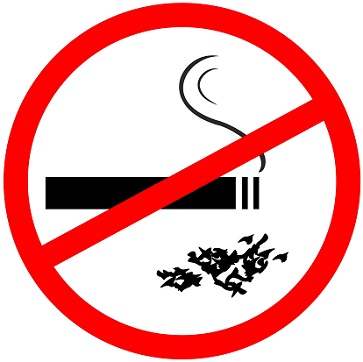 According to figures compiled by the Centers for Disease Control and Prevention, most of the people who smoke cigarettes in the U.S. are physically dependent on nicotine, the main active ingredient in all types of tobacco. Unfortunately, for a number of reasons, nicotine dependence/addiction is fairly easy to acquire and fairly hard to overcome. Doctors, addiction specialists and public health officials refer to the attempt to stop smoking cigarettes as smoking cessation. More than two-thirds of American cigarette smokers openly express a desire to stop smoking entirely and establish a long-term nicotine-free lifestyle. In line with this fact, millions of Americans make an effort at smoking cessation every year; however relatively few people successfully quit smoking for more than a few days or weeks.
According to figures compiled by the Centers for Disease Control and Prevention, most of the people who smoke cigarettes in the U.S. are physically dependent on nicotine, the main active ingredient in all types of tobacco. Unfortunately, for a number of reasons, nicotine dependence/addiction is fairly easy to acquire and fairly hard to overcome. Doctors, addiction specialists and public health officials refer to the attempt to stop smoking cigarettes as smoking cessation. More than two-thirds of American cigarette smokers openly express a desire to stop smoking entirely and establish a long-term nicotine-free lifestyle. In line with this fact, millions of Americans make an effort at smoking cessation every year; however relatively few people successfully quit smoking for more than a few days or weeks.
There are several scientifically proven methods to increase the odds of achieving and maintaining smoking abstinence, including nicotine replacement therapy, use of non-nicotine-based medications such as Chantix (varenicline) or Zyban (buproprion), and non-medication-based approaches such as in-person or remotely delivered behavioral therapy and informative sessions called brief interventions. However, most people in the U.S. who try to quit smoking do not rely on one of these well-tested options.
Time Perspective And Future Orientation
As a rule, most people primarily focus their thoughts and actions on events that happened in the past, events happening in the present or events that may occur in the future. The frame of reference in use determines any given individual’s time perspective. Two of the time perspectives have a particular bearing on substance use, abuse and addiction: a hedonistic view of the present and a future-oriented perspective that emphasizes the benefits of delayed gratification. Generally speaking, people who have a hedonistic perspective on the present value impulsive actions and short-term rewards over carefully considered actions and long-term rewards. Conversely, people who have a future-oriented perspective value carefully considered actions and long-term rewards over impulsive actions and short-term rewards.
Time Perspective’s Impact On Smoking Cessation Success
Doctors and researchers know that people with a future-oriented perspective commonly receive long-term benefits in the form of improved or well-maintained health. Smoking cessation success is one of these potential health benefits. In the study published in Addictive Behaviors, the University of Waterloo researchers used a large-scale survey of smokers living in Canada, the U.S., Great Britain and Australia to investigate exactly why future orientation has a positive influence on smoking cessation attempts. All told, this survey included information from 9,772 people; it covered topics that included the day-to-day time perspective of each participant, each participant’s level of personal motivation to quit smoking, the number of quit attempts over an eight-year period of time and the relative success of any quit attempts during the same time frame.
After analyzing the survey results, the researchers confirmed that cigarette users with a future-oriented time perspective successfully quit smoking more often than their counterparts who don’t have a future-oriented perspective. When they looked at the underlying reasons for the different outcomes in the two types of smokers, they found that the future-oriented individuals who successfully stopped smoking typically had a higher level of motivation during the cessation process and sustained their active participation in this process for longer amounts of time.
The authors of the study published in Addictive Behaviors note that their project is the first attempt to explore the link between future orientation and smoking cessation success in current or recent smokers located in more than one country. In addition, they note that the link between a future-oriented time perspective and success in smoking cessation was found in all four countries under consideration. The study’s authors believe that the two factors uncovered during the study—heightened motivation and sustained participation during quit attempts—may be the main explanatory factors for the positive outcomes in future-oriented smokers.
How Stimulant And Smoking Addictions Can Be Treated Together
Call Us Now To Break Free From Your Addictions!
A recent study from the University of California, San Diego (UCSD) found that men infected with HIV who use methamphetamine may experience faster T-cell activation and proliferation. In other words, the use of methamphetamine may cause HIV to progress more rapidly to AIDS.
Who Was Studied?
 The study looked at 50 men who have sex with men (MSM). The average age of the participants was 46, and each had been on retroviral medication for HIV for an average of four years. Forty-two percent of the participants were white, 20 percent were black and 4 percent were Hispanic.
The study looked at 50 men who have sex with men (MSM). The average age of the participants was 46, and each had been on retroviral medication for HIV for an average of four years. Forty-two percent of the participants were white, 20 percent were black and 4 percent were Hispanic.
Once a month for a year, the study participants completed a survey about their adherence to antiretroviral treatment and their use of various party drugs. Twenty of the men reported using marijuana during the study period, 16 used meth, 12 reported drinking alcohol, 11 used cocaine and 13 of the respondents used some other party drug.
The researchers also used frozen samples of a type of blood cell with a round nucleus known as peripheral blood mononuclear cells (PBMCs) to evaluate reservoirs of HIV DNA, cellular HIV RNA, and the activation and proliferation of immune cells named CD4 and CD8 (sometimes known as T-helper cells or T cells). HIV binds itself to CD4 cells, which multiply in order to help combat infection. In this way, the immune system actually makes more copies of the virus it is trying to destroy.
What The UCSD Study Found
The UCSD study found that the men who used meth had higher levels of activated and proliferating CD8 and CD8 cells, poorer CD4/CD8 ratios, and greater reservoirs of HIV DNA that had been incorporated into the genetic material of a host cell—proviral HIV DNA.
The study also found higher cytomegalovirus (CMV) load and shedding in the semen of meth users. While HIV is a sexually transmitted disease (STD), and sexual activity remains the leading cause of HIV transmission around the world, levels of HIV in the semen of an infected man are actually lower than the levels of HIV in the blood. However, HIV levels in semen are higher in a subgroup of men, and the UCSD study found that HIV levels in semen were more likely to be high in the men who used meth. A higher level of HIV in semen makes it more likely that an infected man could transmit the disease through unprotected intercourse. Previous studies have found that HIV transmission among meth users occurs at a higher rate than among other HIV-positive individuals.
Although the participants in this study reported a variety of recreational drug use, meth was the only drug that appeared to have any significant influence on T-cell activation and proliferation, and on levels of proviral HIV DNA.
In order to eliminate variables that could also explain the difference in the progression of HIV, the researchers selected MSM of a similar age, with similar baseline CD4 and CD8 counts, who had spent a similar amount of time on antiretroviral medications, and who were not infected with any other STDs that could contribute to the worsening of their HIV.
Researchers do not yet understand why the use of methamphetamine could speed the progression from HIV to AIDS or increase cognitive impairment among men with HIV. One possibility is that meth use corresponds with difficulty sticking to a regimen of anti-viral medication (although the men in this study who used meth reported similar rates of adherence as non-meth users). Risky behaviors common to meth users may also have something to do with speeding health deterioration among men with HIV.
However, the fact that the other recreational substances used by men in the study did not affect their HIV makes it somewhat less likely that risky behaviors associated with drug use will successfully explain the way meth affects HIV. It may be that there is some physiological cause and effect through which meth use directly promotes AIDS progression and increased cognitive deterioration.
If you or someone you love is struggling with a drug or alcohol addiction – Call us now – Help is available 24/7…It’s worth it!
07 Jul 2014
Are Binge Drinkers Addicted To Alcohol?
Binge drinking is a term used to describe heavy drinking. According to the National Institute on Alcohol Abuse and Alcoholism (NIAAA), binge drinking means having enough drinks in a two hour period to achieve a blood alcohol concentration level of 0.08, a level at which a person is considered to be intoxicated. Binge drinking is increasingly common, but does it make a person an alcoholic or addicted to alcohol? The answer is not so simple.
The Risks Of Binge Drinking
For women, binge drinking typically means having four or more drinks in a two-hour period. For men, it means having five or more drinks. Consuming this much alcohol in one sitting, or more, is detrimental to your health. And if you drink this way, you are not alone. One in every six adults in the U.S. binges four times a month. Each binge includes eight drinks on average. This is a lot of alcohol.
Binge drinking can lead to a number of health problems, not least of which is dependence on alcohol, or alcoholism. It can also cause:
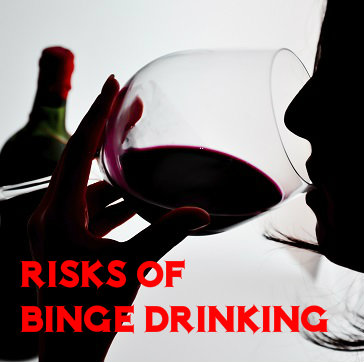 liver disease
liver disease- high blood pressure
- heart attack
- stroke
- neurological damage
- complications if you have diabetes
Binge drinking also leads to:
- accidents and injuries
- alcohol poisoning
- fetal alcohol syndrome
- unintended pregnancies
- problems with relationships
- strain on career and finances
What Is Alcoholism?
So does binge drinking make you an alcoholic? Not necessarily. Addictive disorders are most often diagnosed based on the Diagnostic and Statistical Manual of Mental Disorders. The fifth version of this manual recently came out with new criteria for alcohol addiction. The fourth edition listed alcohol abuse and alcohol dependence (alcoholism) as two separate disorders. The fifth edition merged the two into one disorder: alcohol use disorder. A person can be diagnosed as having a mild, moderate or severe case of alcohol use disorder.
According to the fifth edition, to have an alcohol use disorder you must have two of the eleven symptoms listed in the manual. Having two or three symptoms represents a mild case. Binge drinking is not listed as a symptom, but several of the symptoms could result from binge drinking. For instance, one symptom is drinking more than you intended to on a particular occasion. Many binge drinkers could claim doing this. Another symptom is trying to drink less, but failing. Again, this can happen with binge drinking.
There are several other symptoms that could go hand-in-hand with binge drinking. This means that if you binge drink and end up having two of these symptoms, you could be diagnosed as having mild alcohol use disorder. If the risks of binge drinking are not enough to make you want to slow down, maybe this fact is.
Stopping Binge Drinking
Moderate drinking is not harmful to your health, unless you have specific conditions that are exacerbated by alcohol. If you binge drink regularly, consider cutting back to moderate drinking levels. If you don’t, you put yourself at risk for a number of health problems. Not least of these is alcohol use disorder. If you could qualify for a diagnosis of mild now, you are on the path to having moderate or severe alcohol use disorder later.
Being a moderate drinker means having no more than three drinks per day and seven per week if you are a woman. If you are a man, have no more than four drinks per day and 14 in a week. Cutting back is important for your health, but if you find you can’t, you may need to get help. Rely on friends and family to support you in drinking less, or find a support group to join. You don’t need to be a full-blown alcoholic to ask for help. Doing so now could save you disastrous consequences in the future.
If You Or Someone You Love Needs Help Quitting Drinking – Call Us Now – We Will Get You On The Path To Happy And Healthy Sobriety!
01 Jul 2014
How Have Marijuana Laws Changed?
Attitudes toward cannabis, also known as marijuana, have been undergoing a major shift in recent years. Long known to be one of the less hazardous of illicit drugs, smoking pot still carries risks. There are health problems, the possibility of harming children and teens, not to mention the dangers of driving while high. In spite of the negative aspects, some believe in the pros of legalizing marijuana for recreational use, including voters in Colorado and Washington state.
Which Marijuana Policies Have Changed?
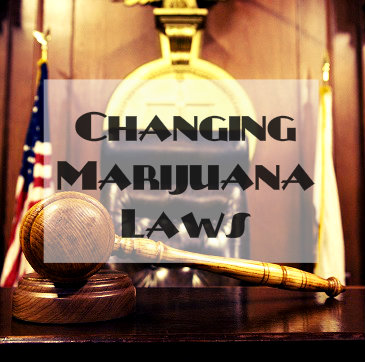 Society’s attitudes toward marijuana have been changing for decades. Some municipalities decriminalized the possession of small amounts of marijuana long ago. In these cities, users may get ticketed, but fines and other repercussions are minimal. In 1996, California became the first state to pass and enact legislation for the legalization of medical cannabis. This allowed doctors to prescribe marijuana to patients who might see benefits from using it.
Society’s attitudes toward marijuana have been changing for decades. Some municipalities decriminalized the possession of small amounts of marijuana long ago. In these cities, users may get ticketed, but fines and other repercussions are minimal. In 1996, California became the first state to pass and enact legislation for the legalization of medical cannabis. This allowed doctors to prescribe marijuana to patients who might see benefits from using it.
After debating the pros and cons of legalizing cannabis, 20 states, as well as the District of Columbia, now allow the legal use of medical marijuana. More recently, residents in the states of Washington and Colorado voted to expand the legality of cannabis and recreational use is now allowed. Alaska may be the next state to pass such legislation. Enough signatures have been collected there to get the issue on the ballot this summer. While states continue to make policy changes regarding marijuana, it is important to remember that this is still an illegal drug, for any type of use, according to the federal government.
What Are The Cons Of Legalizing Marijuana?
Perhaps the biggest reason that states have agreed with their voters and have decided to start legalizing marijuana is for the revenue. As state and local budgets suffer, taxes collected from selling marijuana could make a big difference. There are downsides too, which states and local governments need to consider. The most obvious negative impact could be public health. Marijuana is a mind-altering substance that is most often smoked and could contribute to cancer and lung disorders.
Cannabis is a drug with psychoactive properties. It renders users relaxed and happy, but can also cause paranoia, delusions, and, as a result, some risky behaviors. It impairs judgment and can cause the user to make bad choices and can lead to self-harm and accidents. Just how damaging users under the influence may be remains to be seen. Driving while high on legal marijuana could be a huge issue for public safety.
Among all the negatives of legalizing marijuana, some critics are most concerned about how the policy changes could affect young people. Alcohol has long been legal, but controlled and age-restricted, and yet the harm that it has caused to teens has been dramatic. Underage drinking kills many people every year. Critics of legalized cannabis worry that marijuana will get into the hands of kids and teens more often now and that the impact could be severe. As policies and attitudes regarding this drug shift across the country, it is our responsibility as citizens to be informed.
25 Jun 2014
Are You Addicted To Tanning?
Tanning addiction is an example of what experts term a process or behavioral addiction. Unlike drug or alcohol addiction, there is no substance consumed; yet many of the symptoms overlap. Going for a tan, whether at a salon with artificially produced light or at the beach and under the sun, poses many risks, not least of which is skin cancer. Getting a little sun is healthy, but becoming obsessive about getting that golden glow could prove fatal.
What Is Tanning Addiction?
 A process addiction is one that involves a behavior rather than a substance. People can become addicted to gambling, shopping, sex or even getting a tan. Research indicates that tanning addiction is a real phenomenon and one that mostly impacts younger women. What happens when you tan that can lead to an addiction is the same thing that happens when someone takes a hit of a drug, or wins at the blackjack table: you feel good.
A process addiction is one that involves a behavior rather than a substance. People can become addicted to gambling, shopping, sex or even getting a tan. Research indicates that tanning addiction is a real phenomenon and one that mostly impacts younger women. What happens when you tan that can lead to an addiction is the same thing that happens when someone takes a hit of a drug, or wins at the blackjack table: you feel good.
Exposure to both sunlight and the artificial light of a tanning bed produces a pleasurable release of endorphins in the body. Until it becomes uncomfortably hot, being out in the sun simply feels good. It’s also a powerful mood booster. As with substance abuse, some people are susceptible to abusing the feel-good sensation of tanning. They seek out the good feeling, as well as what they perceive to be an attractive tan, over and over again. Research shows that people addicted to tanning experience many of the same physical and psychological symptoms as alcoholics and drug addicts.
How Do I Know If I’m Addicted To Tanning?
A good way to check if you might be addicted to tanning is to look at those symptoms and signs of addiction that are common to both chemical and behavioral addictions. One of the first signs of an addiction of any kind is tolerance. This means that you need to spend more and more time under the tanning lights in order to get the pleasurable feeling you are seeking. For example, you may have started out tanning once a week, but then climbed to two or three times a week and then every day.
Another important sign of addiction is withdrawal. When you have to skip a tanning session for any reason, do you feel anxious or upset? If so, your body and mind are experiencing withdrawal from your “drug.” Other symptoms of addiction include obsessive thoughts and actions. Are you constantly thinking about getting your next fix? Has your life begun to revolve around tanning? Addiction also causes you to neglect your other activities. Have you let your work or academics slide? Are your relationships suffering? If you recognize these signs in yourself, you may have a problem.
What Are The Risks Of Tanning Too Much?
Over-tanning is very dangerous. The risk of addiction is serious because it can impact your life in many negative ways even though you are not a drug user or drinker. The bigger danger, however, is the effect of the tanning on your skin and your health. Melanoma, a type of skin cancer, is the deadliest form of cancer in the U.S. and the number one most preventable factor in developing it is the use of tanning beds.
If you feel that you have a problem with tanning, cut back or stop altogether. If you find that you can’t, turn to an addiction counselor experienced in working with process addictions. With the help of a professional you can kick the habit, and in doing so you just might save your life.
06 Jun 2014
Online Drug Trafficking Becoming Alarming
A recent survey found that there has been an increase in drugs being sold on the Internet, and the results indicate a rise in global drug use in general.
According to the Global Drugs Survey, 60 percent of respondents reported buying illegal drugs like marijuana and LSD online.
Main Reasons For Online Drug Trafficking Increase
 What’s causing this increase in online drug trafficking? The main reason is sites that allow people to anonymously buy drugs using bitcoin peer-to-peer digital currency. The most famous online drug source was the original Silk Road online market, which was shut down by the Federal Bureau of Investigations in October, 2013. Drug officials also report the increase of online trafficking is because users often face the chance of being robbed or physically assaulted during face-to-face drug exchanges, so they feel that online transactions are safer.
What’s causing this increase in online drug trafficking? The main reason is sites that allow people to anonymously buy drugs using bitcoin peer-to-peer digital currency. The most famous online drug source was the original Silk Road online market, which was shut down by the Federal Bureau of Investigations in October, 2013. Drug officials also report the increase of online trafficking is because users often face the chance of being robbed or physically assaulted during face-to-face drug exchanges, so they feel that online transactions are safer.
Respondents to the Global Drug Survey reported that, just like overall Internet shopping, buying drugs online is faster, cheaper and there is a larger selection. The survey found that over 40 percent of participants said they were buying online for the first time, which proves that the web is a growing resource for drug users.
The overall cause of the increase in online drug purchases can be explained by the increase in drug use overall. The survey found that a third of the respondents between the ages of 18 and 24 used drugs, which had increased from a previous survey showing only a fifth of that amount. The Global Drug Survey collected data from 45 countries and 80,000 individuals.
Marijuana is the drug of choice in many countries. Brazil, France and the United States are countries with the highest rate of marijuana consumption. The survey found that 70 percent of Brazilian and American respondents used marijuana.
Another cause for the increase in global drug use can also be blamed on the legalization of marijuana. Countries around the world seem to have conflicting opinions on legalization. The United Nations reportedly feels that legalization poses a great danger to its country. However, Uruguay legalized the drug’s sale and production last year. In the United States, Colorado and Washington State were the first states to legalize the use of the drug recreationally, though with many limitations. In the Netherlands, possession of marijuana under five grams has been legal since 1976.
Something alarming that the survey found that was only about 20 percent of those 80,000 respondents reported ever seeking help or having feelings that marijuana use had a negative effect on their job or schooling.
Read More About How The War On Drugs Isn’t Effective At Protecting Youth
05 Jun 2014
How Can Marijuana Use Lead To Heart Disease?
The use of cannabis (marijuana, hashish and hashish oil) is linked to a range of potential health problems, including diagnosable abuse and/or addiction and increased odds of experiencing some of the psychosis-related symptoms associated with schizophrenia and certain other severe mental illnesses.
In a study published in April 2014 in the Journal of the American Heart Association, a team of French researchers investigated another possible consequence of cannabis use: dysfunction in the cardiovascular (heart and blood vessel) system. These researchers concluded that young adult cannabis users, in particular, put themselves at increased risk for potentially life-threatening cardiovascular problems.
Marijuana Use Stats
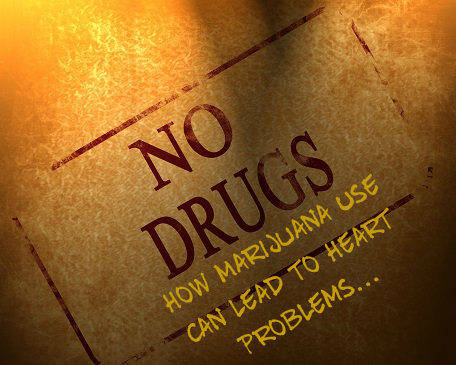 Cannabis use (particularly, marijuana use) is a relatively common form of recreational substance intake among U.S. adults and teenagers, according to figures compiled by the federal Substance Abuse and Mental Health Services Administration. In 2012 (the last year with fully available statistics), almost 19 million Americans over the age of 11 used marijuana in a given month; this number is the equivalent of more than 7 percent of the teen and adult population.
Cannabis use (particularly, marijuana use) is a relatively common form of recreational substance intake among U.S. adults and teenagers, according to figures compiled by the federal Substance Abuse and Mental Health Services Administration. In 2012 (the last year with fully available statistics), almost 19 million Americans over the age of 11 used marijuana in a given month; this number is the equivalent of more than 7 percent of the teen and adult population.
The highest rates of intake for marijuana and all other illegal or misused substances occur in teenagers and young adults between the ages of 16 and 34. Within this fairly broad age range, peak rates of use occur among individuals in their late teens or early 20s. Intake rates are lowest among very young adolescents and adults age 60 or older. Throughout the U.S., only alcohol and nicotine outrank marijuana as popular substances of abuse.
Cardiovascular Risks Associated With Marijuana Use
One of the most serious cardiovascular problems is acute coronary syndrome, a term that doctors use collectively to describe any condition that produces a rapid decrease in blood supplied to the tissues that make up the heart muscle. Well-known conditions that meet this definition include heart attack (loss of blood flow and tissue death in specific areas of the heart) and cardiac arrest (stoppage of all heart function). Acute coronary syndrome also includes a form of unpredictable chest pain called unstable angina.
In the study published in the Journal of the American Heart Association, researchers from four French institutions used information from an ongoing project called the French Addictovigilance Network to assess the cardiovascular risks faced by people who use marijuana or other forms of cannabis.
In France, this network acts as a national reporting system for all people seriously impacted by any type of substance abuse or substance addiction. The researchers looked at data gathered from 2006 to 2010. All told, 1,979 reports of serious cannabis-related harm were registered with the Addictovigilance Network during this timeframe.
The researchers found that cardiovascular problems accounted for just 1.8 percent of all cannabis-related harm. However, they also found that many of the reported cardiovascular problems were severe or potentially lethal in nature. For example, over half of the affected individuals suffered from acute coronary syndrome.
Other reported problems included complications related to the function of blood vessels located in the upper or lower limbs, as well as complications related to the function of blood vessels inside the brain. Altogether, fully 25.6 percent of the cannabis users impacted by serious cardiovascular issues died as a result of their condition.
Does Marijuana’s Negative Cardiovascular Effects Have A Greater Impact In Men?
The authors of the study published in the Journal of the American Heart Association found that the vast majority (85.7 percent) of the cannabis users affected by serious cardiovascular problems were male. On average, affected individuals of both genders were just over the age of 34. The study’s authors specifically note that young adults who use cannabis may have increased risks for potentially fatal cardiovascular issues.
In line with this conclusion, they call for wide distribution of information regarding the link between cannabis use and serious heart- and blood vessel-related harm. In addition, they call upon doctors to consider cannabis intake as a possible source or contributing factor for any cardiovascular problems found in young adult patients.
Find Out If Marijuana Is Really Dangerous Now!
Call Us Immediately If You Believe You Or Someone You Know Is Abusing Drugs Or Alcohol!
The phrase older and wiser suggests that as a person ages they learn a lot about how to deal with life. Experience is a profound teacher. However, it’s also true that as a person enters their golden years they are entering new territory. The retirement years are full of all kinds of changes and challenges. Sometimes there are so many of them that seniors are left scrambling for a way to cope.
Older People And Life Challenges That Effect Drug Abuse
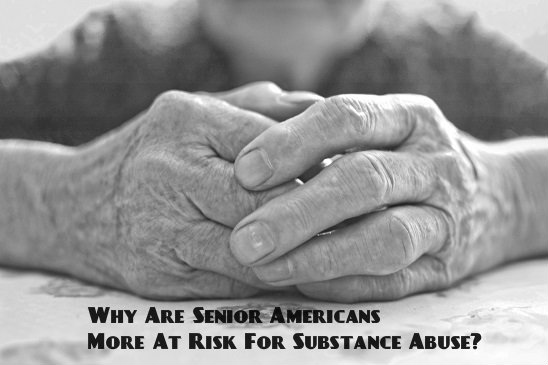 The American Geriatrics Society reports that older adults may be more apt than others to form a substance addiction by virtue of the many life challenges they encounter. Loneliness, grief, lack of purpose, boredom and chronic pain confront seniors with full force. As many as 20 percent of senior citizens msuse or abuse their prescription drugs or alcohol.
The American Geriatrics Society reports that older adults may be more apt than others to form a substance addiction by virtue of the many life challenges they encounter. Loneliness, grief, lack of purpose, boredom and chronic pain confront seniors with full force. As many as 20 percent of senior citizens msuse or abuse their prescription drugs or alcohol.
Alcohol – Most Abused Substance By Seniors
The substance most often abused by seniors is alcohol, with 60 percent of addiction treatment admittances for older adults relating to alcohol use. According to the Substance Abuse and Mental Health Administration (SAMHSA), 5.5 million seniors struggle with an alcohol use problem. This is in part because alcohol is a socially acceptable mode of self-medication.
But for seniors, drinking too much alcohol can have serious consequences. The truth is that alcohol affects older bodies more than younger ones. The senior’s body is slowing down in every way, including metabolism. That means that alcohol is processed much more slowly in an older person’s body. Because of this the National Institute on Alcohol Abuse and Alcoholism recommends that adults age 65 or above consume no more than one alcoholic beverage per day.
Older People Abusing Prescription Drugs
Prescription drugs are another source of potential abuse for seniors. To begin with, senior citizens are prescribed more medication than any other age group of Americans. But just as with alcohol, medications are also metabolized more slowly by older bodies.
Sedatives (barbiturates, diazepam, chlordiazepoxide) used to help older patients sleep are highly addictive. These medications tend to store up in fat deposits which make their effects even longer-lasting in older bodies which typically carry more fat. This is no small problem with the diazepam drug Valium prescribed to 100,000 older Americans annually.
Seniors Abusing Illegal Substances At A Greater Rate?
More people over age 50 are using illegal, illicit drugs. SAMHSA reports that treatment admittances for patients over 50 addicted to illegal drugs doubled and has continued to rise.
The good news in all of this is that when addiction forms late in life, with intervention and treatment there is hope for recovery.
See That There Is Hope For Recovery For YOU!
If You Or Your Elderly Loved One Need Help With Drug Or Alcohol Abuse – Call Us Now – We Are Here To Help!


